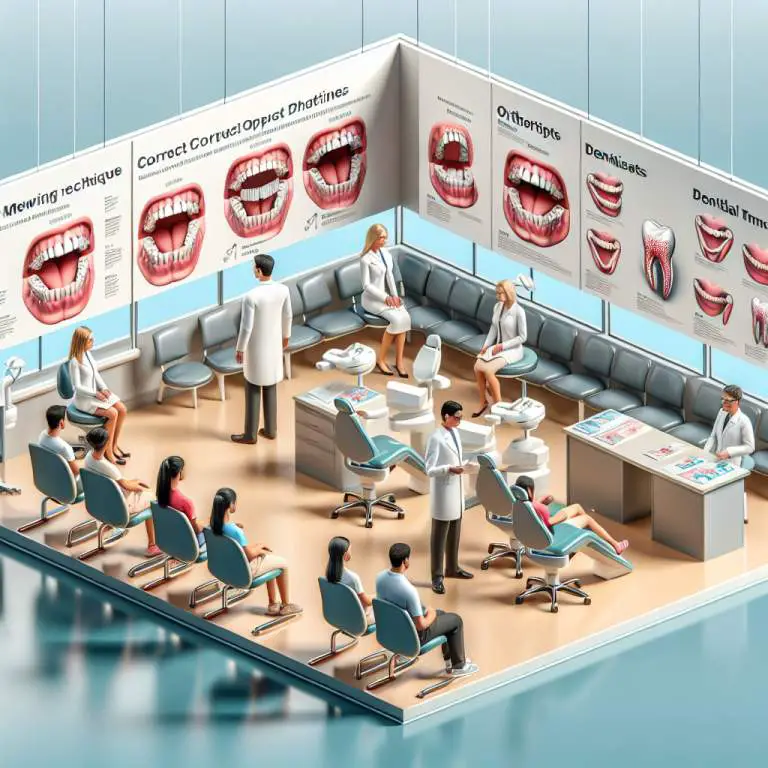Can mewing cause dental issues if done incorrectly?
Mewing incorrectly can lead to dental health issues. If you push your tongue too hard against your teeth, you might cause them to move in unwanted ways. This can result in a misaligned bite or gaps between your teeth. Always practice mewing with gentle pressure and consider consulting an orthodontist for guidance.

How Does Mewing Work and What Is Its Purpose?
Mewing is a technique that involves placing your tongue against the roof of your mouth. This position is supposed to help with the way your jaw and teeth are aligned. The idea is that by doing this regularly, you can change how your face looks over time.
The purpose of mewing is not just about looking better. It’s also believed to improve breathing, sleep, and even reduce problems like snoring. People who practice mewing hope to achieve a more defined jawline and better overall facial structure by encouraging proper oral posture.
What Are the Common Mistakes People Make While Mewing?
One common mistake people make with mewing is not placing their entire tongue on the roof of their mouth. Some only use the tip of their tongue, but it’s important to get as much of your tongue up there as possible. This helps apply the right amount of pressure needed for changes.
Another mistake is not being consistent. Mewing requires regular practice every day to see results. If you’re not doing it often or forgetting to keep your tongue in the right position throughout the day, you might not see any improvements at all.
Can Incorrect Mewing Technique Affect Your Bite?
Yes, if you’re not mewing correctly, it can actually mess up how your teeth fit together when you close your mouth. This happens because putting pressure in the wrong areas can push teeth out of alignment over time. It’s really important to make sure you’re doing it right.
If your bite does start to change because of incorrect mewing, it could lead to other issues like difficulty chewing or even pain in your jaw. That’s why learning the correct technique from the start is super important.
Is There a Risk of Developing TMJ Disorders from Improper Mewing?
Improper mewing can indeed increase the risk of developing TMJ (temporomandibular joint) disorders. These disorders affect the joint that connects your jawbone to your skull, leading to pain and discomfort around your jaw and ears, difficulty opening your mouth wide, and even clicking sounds when you chew or talk.
This risk comes from putting too much pressure on this joint or using incorrect techniques that strain it over time. Being mindful about how you’re practicing mewing can help avoid these kinds of problems and keep your jaw healthy.
| Incorrect Mewing Practice | Potential Dental Health Risks |
|---|---|
| Applying too much pressure with the tongue | Temporomandibular Joint Disorder (TMJD), tooth misalignment |
| Tongue pushing against teeth instead of roof of mouth | Tooth movement or crowding, gum recession |
| Improper jaw positioning | Jaw pain, increased risk of TMJD, uneven jaw growth |
| Excessive force over a short period | Tooth pain, sensitivity, enamel wear |
| Not consulting with dental professionals before starting | Exacerbation of existing dental issues, misdiagnosis of self-perceived flaws needing correction through mewing |
How Can Incorrect Mewing Impact Tooth Alignment?
When mewing is done wrong, it can lead to problems with how your teeth line up. This happens because the pressure you’re supposed to apply evenly gets misplaced. Instead of promoting a healthy jaw and tooth alignment, incorrect mewing pushes teeth in ways they shouldn’t go.
This misalignment doesn’t just affect how your smile looks. It can make chewing food harder. Over time, this uneven pressure might cause your teeth to move into positions that are not natural. This could mean needing braces or other dental work to fix the issues caused by wrong mewing techniques.
What Signs Indicate That Mewing Is Being Done Incorrectly?
If you’re mewing incorrectly, you might notice some clear signs. One big red flag is pain or discomfort in your jaw, teeth, or gums. This isn’t normal and suggests you’re not applying pressure correctly or evenly.
Another sign is if you find it hard to breathe while trying to mew. Proper mewing should not make breathing difficult. If you’re struggling, it’s likely that your tongue placement is off. Paying attention to these signs early on can help prevent any long-term damage from incorrect mewing practices.
Are There Long-Term Dental Health Risks Associated with Wrong Mewing Practices?
Yes, there are long-term risks for your dental health if you keep up wrong mewing practices. One major risk is developing a misaligned bite over time. This can lead to uneven wear on your teeth and may cause jaw pain or TMJ disorders.
Besides physical issues, incorrect mewing can also have cosmetic impacts. It might change the way your face and jaw look in an undesirable way. To avoid these risks, it’s crucial to learn the correct technique for mewing and stick to it consistently.
Final Thoughts
Mewing has the potential to improve facial structure and dental health when done correctly. However, doing it wrong can lead to a host of problems including misaligned teeth and jaw pain.
To get the benefits without the risks, focus on learning proper technique from reliable sources. Remember that changes take time and patience is key. If you’re ever unsure about what you’re doing or if something feels wrong, seeking advice from a professional is always a good idea.






